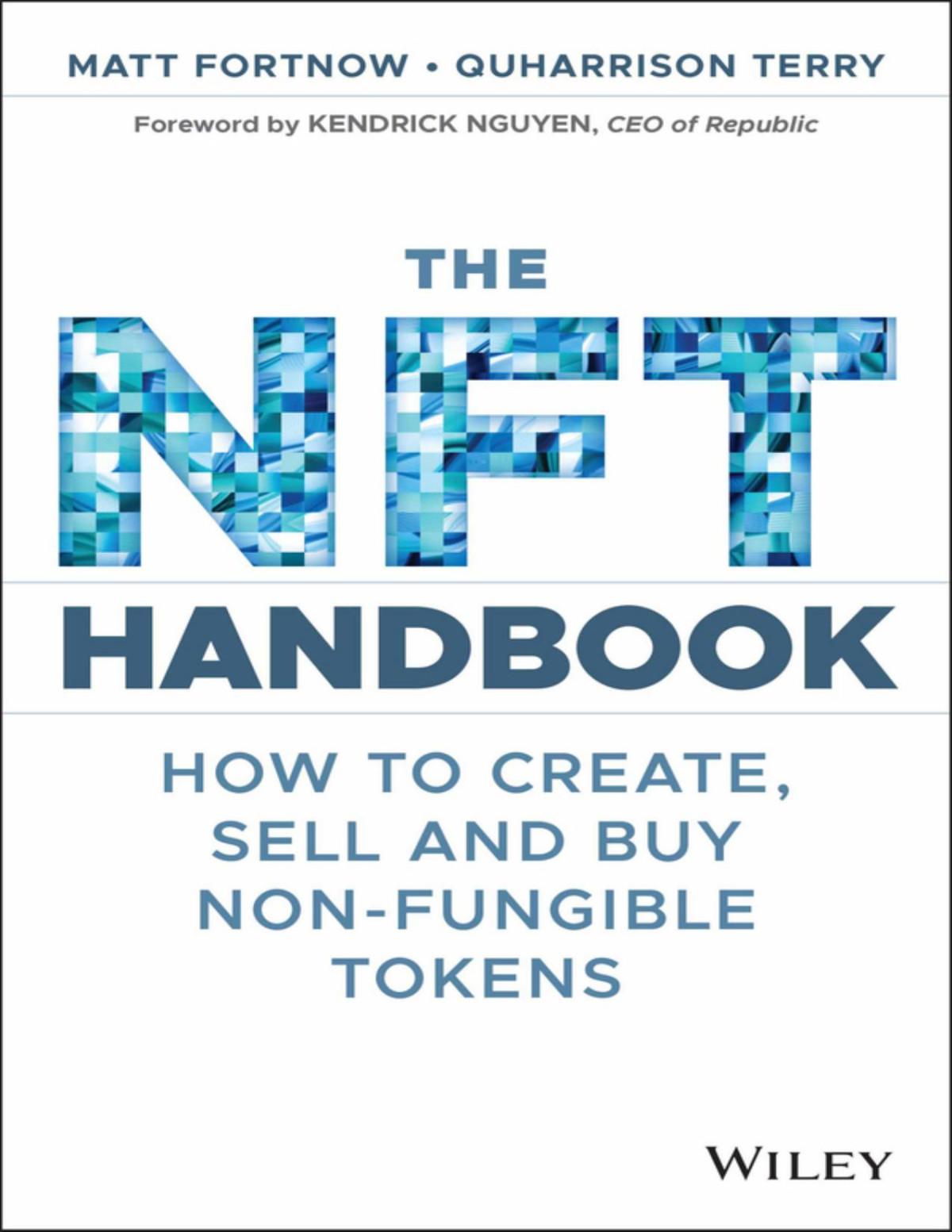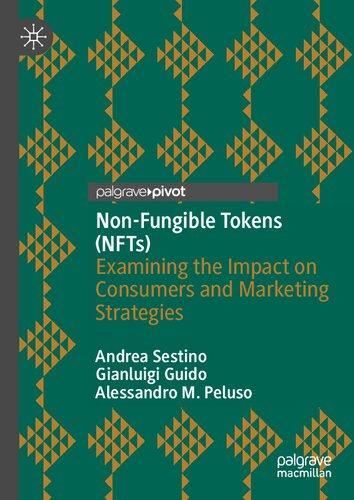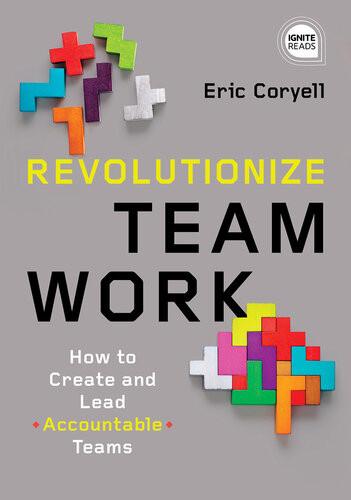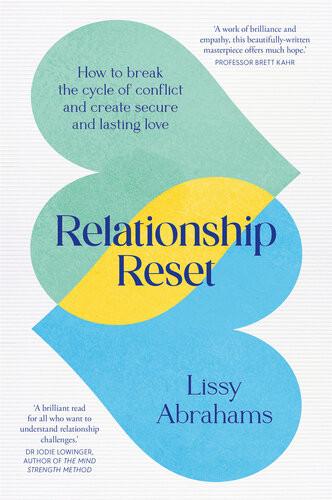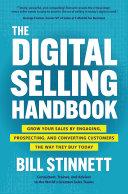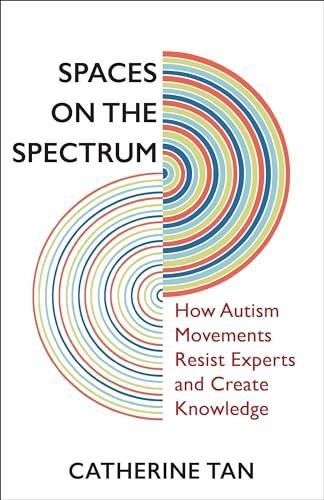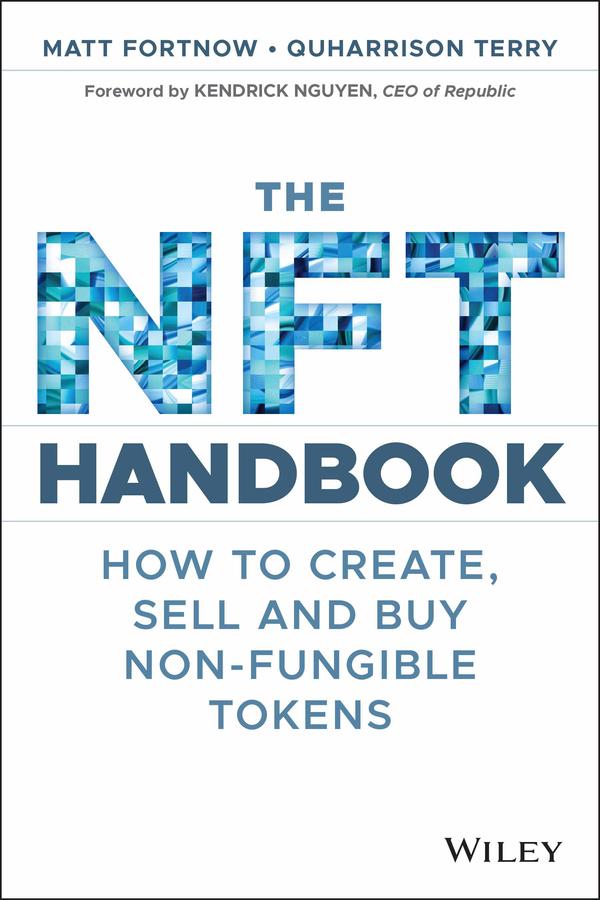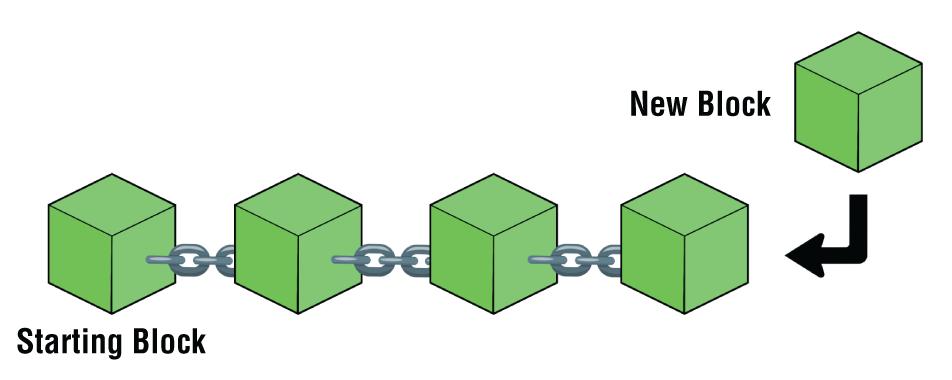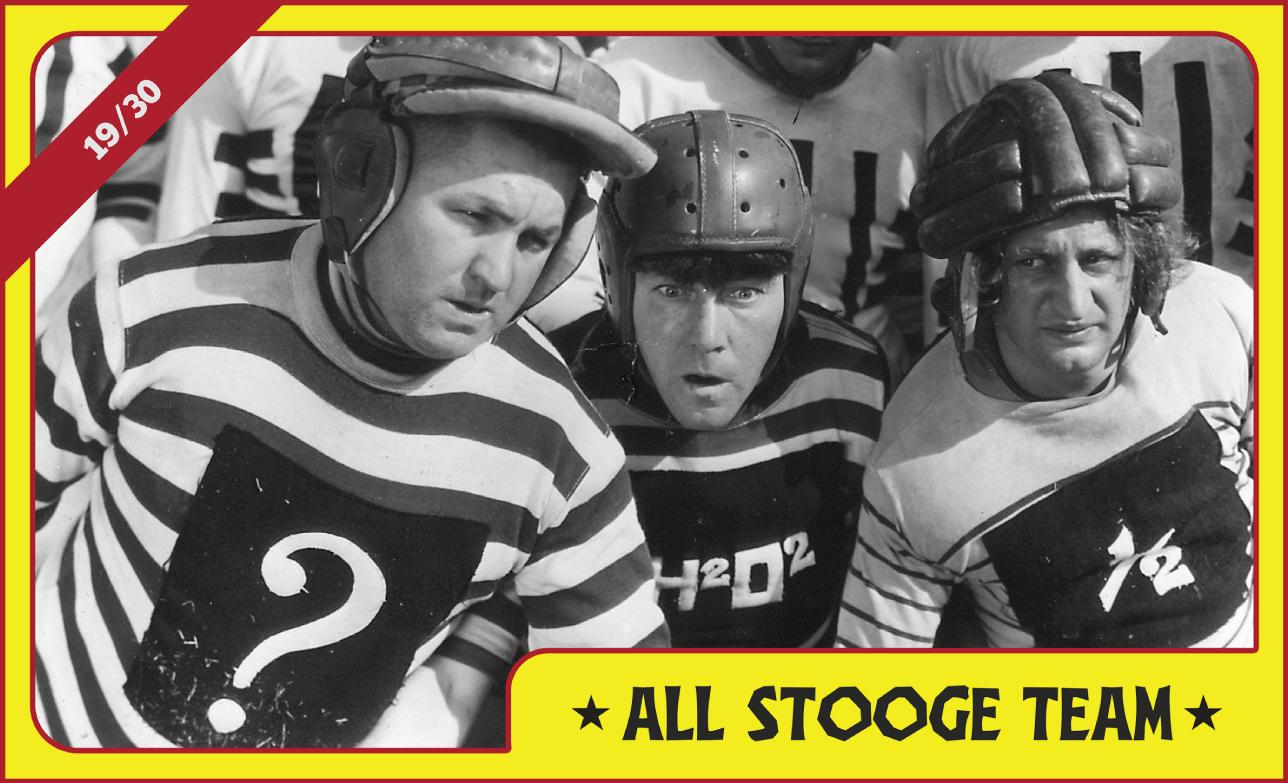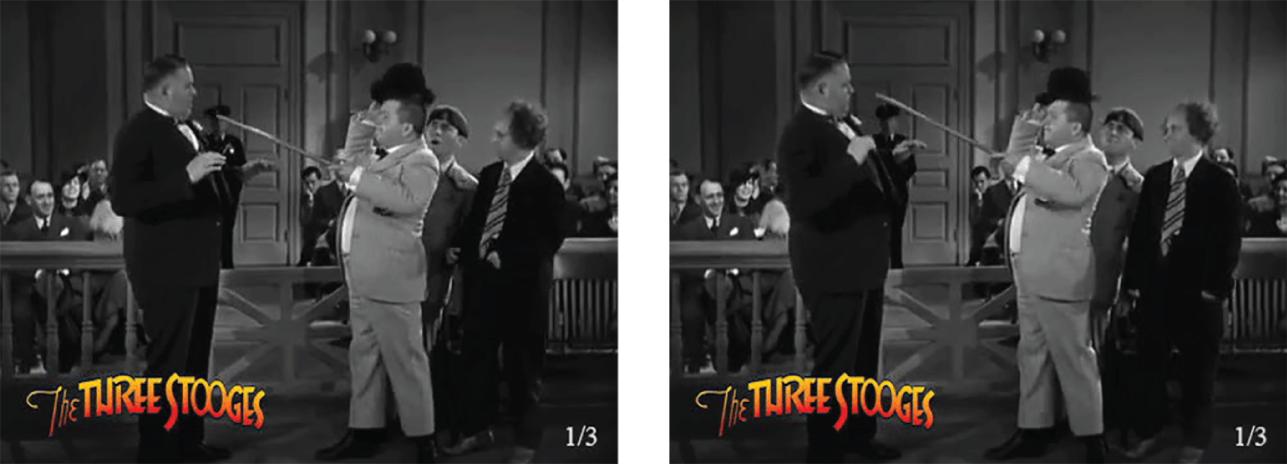Visit to download the full and correct content document: https://ebookmass.com/product/the-nft-handbook-how-to-create-sell-and-buy-non-fun gible-tokens-fortnow/
More products digital (pdf, epub, mobi) instant download maybe you interests ...
Non-Fungible Tokens (NFTs): Examining The Impact On Consumers And Marketing Strategies 1st Edition Andrea Sestino
https://ebookmass.com/product/non-fungible-tokens-nfts-examiningthe-impact-on-consumers-and-marketing-strategies-1st-editionandrea-sestino/
Sell Yourself: How to Create, Live, and Sell a Powerful Personal Brand Cindy Mcgovern
https://ebookmass.com/product/sell-yourself-how-to-create-liveand-sell-a-powerful-personal-brand-cindy-mcgovern/
Sell or Be Sold: How to Get Your Way in Business and in Life
https://ebookmass.com/product/sell-or-be-sold-how-to-get-yourway-in-business-and-in-life/
Revolutionize Teamwork: How to Create and Lead Accountable Teams Eric Coryell
https://ebookmass.com/product/revolutionize-teamwork-how-tocreate-and-lead-accountable-teams-eric-coryell/
How To Create Wealth Investing In Real Estate: How to Build Wealth with Multi-Family Real Estate
https://ebookmass.com/product/how-to-create-wealth-investing-inreal-estate-how-to-build-wealth-with-multi-family-real-estate/
Manage to Engage: How Great Managers Create Remarkable Results Pamela Hackett
https://ebookmass.com/product/manage-to-engage-how-greatmanagers-create-remarkable-results-pamela-hackett/
Relationship Reset: How to break the cycle of conflict and create secure and lasting love Lissy Abrahams
https://ebookmass.com/product/relationship-reset-how-to-breakthe-cycle-of-conflict-and-create-secure-and-lasting-love-lissyabrahams/
The Digital Selling Handbook: Grow Your Sales by Engaging, Prospecting, and Converting Customers the Way They Buy Today Bill Stinnett
https://ebookmass.com/product/the-digital-selling-handbook-growyour-sales-by-engaging-prospecting-and-converting-customers-theway-they-buy-today-bill-stinnett/
Spaces on the Spectrum: How Autism Movements Resist Experts and Create Knowledge Tan
https://ebookmass.com/product/spaces-on-the-spectrum-how-autismmovements-resist-experts-and-create-knowledge-tan/
Table of Contents
Cover
Title Page
Foreword
CHAPTER 1: Introduction to NFTs
CHAPTER 2: What Are NFTs?
Why People Collect
What Exactly Are NFTs?
Types of NFTs
Aspects of NFTs
Extrinsic Elements of NFTs
CHAPTER 3: Why NFTs Have Value
Why Do Collectibles Have Value?
The Problems with Traditional Art
The Problems with Collectibles and Memorabilia
Digital Art Before NFTs
The True Advantage of NFTs
NFTs Aren’t Perfect
External Forces That Drive Value
CHAPTER 4: History of NFTs
Andy Warhol Presents Pop Art
Beeple’s Cyberpunk World Meets NFTs
The Story of Digital Art
CHAPTER 5: NFT Marketplaces
OpenSea
Rarible
Nifty Gateway
SuperRare
Wax (Atomic Hub)
Foundation
NBA Top Shot
VeVe
Known Origin
Myth Market
Wrap‐Up
CHAPTER 6: Creating and Minting NFTs
Creating the Aspects of Your NFT
Creating a Cryptocurrency Wallet
Creating an OpenSea Account
Creating a Collection
Minting an NFT
CHAPTER 7: Selling NFTs
Your Exchange Account
Buying Cryptocurrency
Funding Your MetaMask Wallet
Selling Your NFTs
Marketing Your NFTs
CHAPTER 8: Buying NFTs
Why Buy NFTs?
Buying NFTs
Building an NFT Collection
CHAPTER 9: Legal Aspects of NFTs
Are NFTs Securities?
Intellectual Property Rights
Right of Publicity
Right of Privacy
Contracts
Taxes
CHAPTER 10: The Future of NFTs
The Metaverse
Non‐bankable Assets
Digital Wallets
The Unwritten Future of NFTs
Index
Copyright
Dedication
About the Authors
About the Technical Editor
Acknowledgments
End User License Agreement
List of Illustrations
Chapter 2
FIGURE 2.1 A blockchain
FIGURE 2.2 The Three Stooges “All Stooge Team” NFT, #19 of 30
FIGURE 2.3 The Three Stooges “That’s My Bitcoin!” NFT
FIGURE 2.4 First and last frames of The Three Stooges “Disorder in the Court...
FIGURE 2.5 F1 Delta Time “Intermediate Tyres” NFT selling on OpenSea
FIGURE 2.6 Image of a digital art NFT and a domain name NFT
FIGURE 2.7 Attributes of a pair of F1 Delta Time racing “Gloves” NFT
FIGURE 2.8 Attributes of a Gods Unchained NFT of “Sign of Avarice ID #73809”...
FIGURE 2.9 The Three Stooges “NFT Hucksters” NFT 5/30
Chapter 3
FIGURE 3.1 A centralized versus decentralized system
FIGURE 3.2 Zimbabwe 100 trillion‐dollar bill
FIGURE 3.3 Choice of gas fee presented in the MetaMask wallet
FIGURE 3.4 Estimated annual energy consumption of Bitcoin, Ethereum, and Tez...
FIGURE 3.5 Paid price chart on the day it was hacked
Chapter 4
FIGURE 4.1 Three works by Beeple: Birth of a Nation, Disneyworld 2020, and N...
FIGURE 4.2 First artwork from the Henry Drawing Machine
FIGURE 4.3 Three CryptoKitties: #1, Genesis; #222, Koshkat; and #1992771, Ho...
Chapter 6
FIGURE 6.1 Abstract art image Matt created with Bomomo
FIGURE 6.2 MetaMask home page
FIGURE 6.3 MetaMask download page
FIGURE 6.4 New to MetaMask? page
FIGURE 6.5 MetaMask Secret Backup Phrase page
FIGURE 6.6 MetaMask wallet
FIGURE 6.7 Connecting MetaMask to OpenSea
FIGURE 6.8 OpenSea account page
FIGURE 6.9 “Julian Edelman: INCREDELMAN” collection logo and banner images
FIGURE 6.10 “Create your collection” pop‐up
FIGURE 6.11 Akwasi Frimpong’s The Rabbit Theory verified collection
FIGURE 6.12 “Create new item” page
Chapter 7
FIGURE 7.1 Coinbase “Create account” pop‐up
FIGURE 7.2 Gas prices on Etherscan’s Ethereum Gas Tracker
FIGURE 7.3 Coinbase “Buy” pop‐up
FIGURE 7.4 Coinbase “Send” pop‐up
FIGURE 7.5 OpenSea listing page
FIGURE 7.6 Ethereum icon
FIGURE 7.7 OpenSea Highest Bid setup
FIGURE 7.8 OpenSea Bundle setup
Chapter 8
FIGURE 8.1 NFT Make an Offer pop‐up on OpenSea
FIGURE 8.2 NFT “Place a bid” pop‐up on OpenSea
Chapter 9
FIGURE 9.1 Logos of In‐N‐Out Cleaners and In‐N‐Out Burger
FIGURE 9.2 “®” NFT
FIGURE 9.3 Main image of “Snoop Dogg #2” on OpenSea
FIGURE 9.4 Marilyn Monroeji app
CHAPTER 1 Introduction to NFTs
By many accounts, Google was late to the search engine game. Founded in 1998, it was the 24th search engine to come onto the scene. What’s Google 24th at now?
Larry Page and Sergey Brin, the cofounders of Google, focused on differentiating their search engine and creating a compelling product from the outset. Monetizing the search engine was an afterthought. Search engines are all about connecting people from a query to a destination. It’s a game of understanding the user’s intent. What do they want to find? Ideally, the engine gets it right on the first search result; otherwise, you’re forcing the user to do the hard work of finding what they’re looking for.
Google’s revolutionary idea was PageRank, a ranking system that prioritized web pages by social proof. The more that other domains link to a web page, the higher it ranked on Google’s search results because there was social proof from other users that it was a helpful resource. Google’s indexing method was in stark contrast to other search engines, which ranked pages by analyzing the page’s content for keyword density.
Backed by this superior theory of ranking the web’s content, Google showed promise of having a better utility than any other search engine of the time. It also attracted the attention of computing pioneers. Before Google was even incorporated, it received its first investment of $100,000 from Andy Bechtolsheim, cofounder of Sun Microsystems—a legend in the world of computing. Google rounded out this investment in 1998 with money from three other angel investors, including Amazon founder Jeff Bezos, Stanford University computer science professor David Cheriton, and entrepreneur Ram Shriram.
Page and Brin were just a couple of smart kids from Stanford trying to solve a problem on the Internet. Their laser focus on creating a
great product that understood the user’s search intent was the utility that they brought to the world. The utility they made was enough to attract attention from some of the biggest names in tech. It wasn’t until two years later that they would finally incorporate AdWords into their search engine and monetize their traffic.
We see a lot of similarities when comparing those early Internet days with early non‐fungible tokens (NFTs). The vast majority of NFTs have no utility beyond investment speculation—in much the same way that Ask Jeeves and Yahoo Search were simply joining in on the action of search engines with no real differentiation. And because we’re in the early days of NFTs, these directionless projects can get a lot of attention, even though there’s no use case for them. However, as time passes, we’ll see a greater focus on NFTs with utility— tokenized projects solving a problem or creating something unique for users. Those projects that lack a use case will miss out on the real money to be made a few years from now.
Take, for example, the Bored Ape Yacht Club. The founders have created 10,000 Bored Ape NFTs that act as membership cards into the Internet Yacht Club. Right now, this membership card gives you access to a digital bathroom where you can take a “pen” and draw, write, or graffiti on the walls every 15 minutes. It sounds insignificant, but it’s a unique experience. They’ve carved out this digital environment reserved only for the Bored Ape NFT owners. Yes, the Bored Apes are collectibles in essence. But it’s the access and the utility that they provide that excites us for the future of this project.
Access might be the most significant use case of NFTs currently. In other words, to what does owning an NFT grant you access? We’re surely going to see the utility of NFTs go way beyond this. Especially considering the wide variety and diversity of people getting into NFTs right now, there are so many exciting individuals with all types of ideas coming together to collaborate and create magical experiences.
Now is the time for experimentation, collaborating with others, and not working in a silo. This book is a product of two people experimenting with NFTs in their respective fields and starting a random conversation that ballooned into so much more.
QuHarrison Terry was working on selling the WorldStarHipHop Chain NFT and creating liquidity for pop culture–focused NFTs. Matt Fortnow created the official Three Stooges NFTs and contemplated how iconic intellectual property could exist as NFTs.
Let’s rewind the tape back to the early Internet 1.0 days: 1995. Matt practiced entertainment law in New York City when a few fraternity brothers from Carnegie Mellon University recruited him to start an Internet company. They founded Commissioner.com, the Web’s first fantasy sports service, which they sold to CBS SportsLine in 1999. Always looking to develop uses for new technologies, Matt got heavily involved in blockchain in 2015, virtual reality/augmented reality (VR/AR) in 2016, and NFTs in 2020. It’s actually through the VR/AR connection that he met QuHarrison.
QuHarrison recalls:
“I got a call one day from a friend who said I had to talk with this Matt Fortnow guy. This was at the early peak of NFT hype in March 2021, so I was used to talking with many people about a lot of NFT ideas every day. The conversation took on a life of its own and went on for a couple of hours. We were just riffing about how NFTs were all about sales and liquidity, the possibilities of tokenizing IP and revenue streams, and just having a fun time sharing ideas. By the end of the conversation, we were like, ‘Yeah, we need to write a book on this.’ And that’s how a marketer and an attorney‐turned entrepreneur came to write a book on NFTs. Literally a chance conversation around this shared culture of NFTs. And I think that’s the beauty of this space right now. At the precipice of any new technology, it’s prime for collaborations between people of different backgrounds.”
It may feel like you’re late to NFTs. But you’re actually early in the grand scheme of things because we just haven’t seen all the use cases of this technology yet. For reference, there were only about 130,000 active users on OpenSea, the largest NFT marketplace, in August 2021. With more than four billion people who have access to the Internet worldwide, we’re nowhere near the exciting times of NFTs. If Page and Brin thought they were late to the Internet in 1998, we wouldn’t have the most effective and intuitive search engine that we
have today. But they looked at the emerging Internet technologies around them and had a theory on how it could be done better. That’s where we are at with NFTs today.
Take the information in The NFT Handbook as a starting point for your NFT journey. We’ll take you through the history of NFTs to the basics of creating and collecting NFTs to marketing your NFTs, and much more. There are many people talking about NFTs and sharing their thoughts, their strategies, and their ideas. Use this book as a launchpad to go out and learn more about what interests you about NFTs.
Equipped with what you’ve learned in this book, start connecting with people in the NFT ecosystem. There are many NFT communities on Twitter, Clubhouse, Discord, Instagram, and other Internet destinations with people just like you who want to connect and learn from each other. At this stage in the lifespan of NFTs, it pays to communicate, experiment, and collaborate. Ultimately in the canon of NFTs, we don’t know whether the current NFT projects we’re seeing will be more akin to Infoseek (one of the earliest search engines, not around today) or Google (late to the game but created a superior product that stands even stronger today).
We’ve also created TheNFThandbook.com with extensive resources and links. Since the NFT space is ever evolving, the website will feature ongoing updated information.
As we dive in, your first question may be, “What are NFTs?”
CHAPTER 2
What Are NFTs?
Even before you think about non‐fungible tokens (NFTs), which in their most basic form are unique digital collectibles secured by the blockchain, you must understand how collectibles work. Perhaps the following eclectic Beanie Babies parable will clarify the erratic and eccentric psychology behind why we collect.
Why People Collect
Before NFTs, there were Beanie Babies…
From stamps to Civil War weapons to sneakers, people collect many different objects in various formats. So, it should come as no surprise that there is a market for collectibles in a digital form. Conceptually, it’s confusing. But on the sheer basis of wanting to own a unique item that others do not have, digital collectibles vary little from their physical counterparts. Therefore, to understand why people collect NFTs, we’ll draw a comparison to a physical collectible that took the world by storm in the 1990s: Beanie Babies.
From its inception in 1993, Ty Warner, the founder of Beanie Babies, built scarcity into his product. The plush toys were distributed in small quantities to small retailers, avoiding chain retailers and large orders altogether. Ty didn’t want people to be able to find or buy every Beanie Baby they wanted.
The company kept the number of Beanie Babies in circulation secret. It “retired” the production of certain Beanie Babies to create more exclusivity. It intentionally let misprints and faulty Beanie Babies through the cracks, which would become extra rare editions of the toys.
Around the same time as the Beanie Babies’ rise in the public consciousness, eBay emerged and positioned itself as the online marketplace for buying and selling collectibles worldwide. It was a synergistic relationship that ballooned the resale value of Beanie
Babies and validated eBay as a valuable tool for speculators in all collectibles markets.
Those lucky enough to get their hands on one of the retired $5 plushies could, at minimum, see a two‐ or three‐fold return by listing it on eBay. Some rarer misprints, such as the “Pinchers the Lobster” misprint as “Punchers the Lobster,” yielded one collector more than $10,000.
The Beanie Babies craze was in full swing toward the end of the 1990s. Robberies and even murders ensued over the pursuit of the plush toys. For example, at a Hallmark store in West Virginia in 1999, a security guard was shot and killed when tensions were high due to a late shipment of Beanie Babies.
Sane adults searched far and wide for the chance to get a single life‐changing Beanie Baby. One set of divorcees battled over who got the Beanie Babies collection, believing it was the most valuable asset that the two had to divvy up.
Then in 1997, McDonald’s got in on the craze with Ty Inc. Together they launched the Teenie Beanies product line in McDonald’s Happy Meals and proceeded to sell 100 million of the mini plush toys in just 10 days.
Magazines, such as Mary Beth’s Beanie World, which sold 650,000 copies a month at its height, published entire spreads on Beanie Babies, discussing their value as a speculative investment, which, with the right strategy, could yield more than enough to send a kid to college.
Just when Beanie Babies seemed to be a collectible that would carry on for decades, it all came crashing down. Talk of their overvaluation sparked an avalanche of Beanie Babies hoarders to list their toys on eBay, causing a significant oversupply. In turn, the price of Beanie Babies plummeted.
Seemingly overnight, people’s collections of presumed valuable Beanie Babies became nearly worthless. The story of Chris Robinson Sr.—the man who spent more than $100,000 on Beanie Babies for the speculative investment—became the symbol for the crushing defeat that this collectible market experienced.
The Financial Times aptly called Beanie Babies “the dot‐com stock of the soccer mom world in the second half of the 1990s.” We don’t draw this comparison to say that NFTs are doomed to the same fate as Beanie Babies, that is, a collectible bubble bound to burst. Instead, Beanie Babies provide an excellent look into the dynamics of why people collect.
The same basic principle that drove people to collect Beanie Babies drives people to collect NFTs: scarcity. Although other factors drive collectors to collect, such as investment, speculation, emotional connection, the fear of missing out (FOMO), and “the thrill of the hunt,” at the core of collecting is scarcity. No matter what we collect, we do so because there are a limited number of those things.
Could the NFT market crash? Anything is possible. But unlike Beanie Babies, NFTs provide real‐world solutions to problems plaguing the art and collectibles markets, as we discuss in Chapter 3, “Why NFTs Have Value.”
Now that we’ve addressed why people collect, whether it’s physical or digital collectibles, let’s dive into the topic at hand: NFTs.
What Exactly Are NFTs?
NFTs are generally known as a particular type of digital collectible, such as digital art from Beeple, a digital trading card from Rob Gronkowski, a short video from Saturday Night Live, a picture of fortune‐telling Curly of The Three Stooges with an unlockable Curly‐esque fortune, or one of the CryptoKitties. But what exactly are NFTs?
NFTs are unique items verified and secured by a blockchain, the same technology used for cryptocurrencies. An NFT provides authenticity of origin, ownership, uniqueness (scarcity), and permanence for any particular item. Let’s break the term non‐fungible token down a piece at a time.
Tokens
Let’s start with the word token. According to Dictionary.com, one of the definitions of token is “a memento; souvenir; keepsake.” Since
NFTs are commonly known as digital collectibles, one might think the token in NFT is derived from this definition. Although it may apply (somewhat), the token in NFT is derived from something entirely different: the blockchain.
Some of you may be fretting, “Oh no, here comes the technical part. I just want to know what an NFT is.” To understand completely what an NFT is, you need to learn a little about blockchain. We promise not to make it too complicated.
You’ve probably heard of Bitcoin and perhaps some other cryptocurrencies. According to Investopedia, a cryptocurrency is “a digital or virtual currency that is secured by cryptography.” Just know that cryptocurrencies are digital currencies that exist on the Internet. You can buy and sell them for investment purposes, buy things with them, or even stake them (essentially lending them to earn interest).
Whenever someone transacts with a cryptocurrency, whether buying, selling, transferring, staking, or purchasing something with cryptocurrency, that transaction must be verified. The verification process determines whether the sender has the amount of cryptocurrency being sent. This is what keeps a cryptocurrency secure and reliable.
When cryptocurrency transactions are verified, for example, with Bitcoin, the verification is conducted on a group of transactions, not a single transaction. This batch of cryptocurrency transactions is known as a block. Each block has a certain storage capacity. After the block is filled and the transactions have been confirmed, the block of transactions is then appended to the previously verified block, creating an ever‐growing chain of blocks: a blockchain. The process repeats, and the blockchain grows longer and longer (see Figure 2.1).
So, the blockchain of a cryptocurrency is a list of all transactions (every single one) of that currency, going all the way back to the beginning of that cryptocurrency.
Every time someone buys or sells Bitcoin, buys something with Bitcoin, exchanges Bitcoin, or transfers Bitcoin, that transaction is listed on the Bitcoin blockchain. The number of daily Bitcoin transactions reached around 400,000 in January 2021, and
Ethereum (the second largest cryptocurrency) was processed more than 1.1 million times per day (Statista.com). Think of a blockchain as an extremely long accounting ledger.
FIGURE 2.1 A blockchain
Coin vs. Token.
When speaking about certain cryptocurrencies, people often use the terms coin and token interchangeably. But that would be wrong because there is an important distinction.
Cryptocurrencies that are coins, such as Bitcoin, Litecoin, Dogecoin, and Ethereum, have their own respective blockchains. In contrast, tokens are cryptocurrencies that don’t have their own blockchains. Instead, tokens utilize another coin’s blockchain. For example, GameCredits (GAME) and SushiToken (SUSHI), among thousands of others, are tokens that use the Ethereum blockchain. Cryptocurrency tokens that exist on the Ethereum blockchain are also known as ERC20 tokens. ERC20 is the Ethereum standard for creating cryptocurrency tokens.
GameCredits is an interesting case because it was initially a coin with its own blockchain. But to take advantage of the greater functionality that the Ethereum network offers, it switched to become an ERC20 token. So, now all GameCredits transactions (and all other ERC20 token transactions) are recorded on the Ethereum blockchain. This is the reason why Ethereum processes so many transactions a day.
So, the token in NFT is a cryptocurrency token. An NFT exists on a blockchain. Currently, most NFTs are created on and live on the Ethereum blockchain. Some NFTs are created on and exist on WAX, the Binance Smart Chain, and some other blockchains.
Non‐fungible
So, we’ve got the token part down. Now let’s turn to non‐fungible. What does fungible mean? According to Dictionary.com, fungible is an adjective that means “(especially of goods) being of such nature or kind as to be freely exchangeable or replaceable, in whole or in part, for another of like nature or kind.” Let’s start with some examples.
Dollars are fungible. If we give you a five‐dollar bill and you give us back five one‐dollar bills, the exchange value is equal. It doesn’t matter which dollar bills you gave us. Say that you had a stack of one‐dollar bills. You could give us any five of them, and it wouldn’t matter. You could even Venmo us $5. The fact is that dollars are entirely interchangeable.
Similarly, cryptocurrencies are fungible. If you send us a Bitcoin, we don’t care what wallet it came from; a Bitcoin is a Bitcoin, just like a dollar is a dollar.
Even some goods or commodities (as the previous definition points out), such as barrels of oil, are considered fungible. It doesn’t matter which barrels you send me. Any barrel of oil of the same grade would do.
Using the previous definition, it seems evident that non‐fungible items can’t be freely exchanged or replaced by similar items. For example, diamonds are non‐fungible. Each diamond is unique in size, color, clarity, and cut. If you bought a particular diamond, it would not be easily interchangeable with another diamond.
Likewise, NFTs are non‐fungible. Each NFT is unique. You cannot freely exchange or replace one NFT for another.
But what makes each NFT unique? After all, isn’t it easy to download, copy, and share images from the Internet? Yes, but you can take a photo (or preferably create an image) and mint that image
into a token that exists on a blockchain. We use the term mint like minting a physical coin.
When cryptocurrency coins and tokens are created, they are minted. Usually, millions or even billions of coins or tokens are mined or minted for a particular cryptocurrency. Generally, a cryptocurrency has a circulating supply, the number of coins or tokens already minted, and a max (maximum) supply, the total number of coins that can be minted. The max supply amount is baked into the original code that created the cryptocurrency and cannot be altered.
Contrast this with a fiat currency, such as the U.S. dollar, the supply of which can be continually inflated by printing more dollars. As more dollars are printed, the value of each dollar decreases, assuming that the demand for dollars remains the same. Thus, there is no max supply of dollars or other fiat currencies.
Bitcoin has a max supply of 21,000,000 coins, whereas Uniswap (UNI), an ERC20 token, for example, has a max supply of 1,000,000,000 tokens. Each NFT functions like a cryptocurrency, but NFTs have a max supply of 1. That’s what makes NFTs unique and non‐fungible; they cannot be freely exchanged with something of like kind because there is nothing of like kind. Think of an NFT like an original painting: there’s only one. There can be copies of a painting or prints made, but there’s only one original.
Even though we just said that an NFT has a max supply of 1, it is possible to mint an NFT with a supply greater than 1. For example, you could mint 100 “copies” of the same NFT. Technically, it’s 1 NFT of 100 tokens. Each of the tokens could be exchangeable with the other tokens of the same NFT because they would be the same in every respect. Although these multitoken NFTs are considered NFTs, we would not technically refer to them as NFTs because they are fungible, albeit with a limited supply, but they are still fungible.
FIGURE 2.2 The Three Stooges “All Stooge Team” NFT, #19 of 30
We need to distinguish between a multitoken NFT and a limited edition or series of NFTs of a particular design. For example, Rob Gronkowski issued four series of NFTs, the design of each series representing one of his football championships. Each series has 87 (being the number of his jersey) editions, and each NFT is individually marked 1/87, all the way up to 87/87. Similarly, The Three Stooges NFT series “All Stooge Team” is an edition of 30 individually marked NFTs. Figure 2.2 shows #19 in that series.
Albeit part of a series of 30, the NFT pictured in Figure 2.2 is a unique token with a supply of 1, which indeed makes it an NFT. Similarly, each of Gronk’s NFTs are also unique NFTs.
One can make an analogy of such limited edition, individually marked NFTs to a series of prints of a painting that are also individually, sequentially marked. Whereas an analogy to the multitoken NFT could be a statue that is cast from a mold a limited number of times, and then the mold is broken. Each statue is an original, but also identical to the other statues from the mold. If each statue is sequentially marked, making each one unique, then this analogy would not be applicable in this case.
Edition numbers can have different valuations. With physical art prints, we generally assign the greatest value to the first edition of the print series, that is, edition 1 of 500. However, with NFTs, the driver of edition valuations can vary. For example, with the NBA Top Shots NFTs, it’s common for the edition number that matches the player’s jersey number in that specific NFT to be the most valuable edition. For LeBron James, edition #23 is often the most valuable, as is edition #77 with Luka Doncic or edition #11 with Kyrie Irving. Absent such an alternate value driver, edition 1 would likely achieve the highest value, like an art print.
Also, note that in the Rob Gronkowski and The Three Stooges NFT editions, each individually numbered NFT had to be minted separately. In the case of a multitoken NFT, all of the tokens of that NFT are created in one minting.
Types of NFTs
Generally, when you think of NFTs, you think of digital art and collectibles. These are the NFTs that are getting all of the press, especially with some of the lofty sales prices. But there are several other types of popular NFTs as well, and we’ll cover them all in this section.
Digital Art and Collectibles
Digital art is a relatively new form of art, which had its origins in the 1950s. When computers became ubiquitous in the 1980s and 1990s, the medium exploded. Artists not only create their art with digital tools, such as a computer or smartphone, but the digital nature of the art is the medium itself. The art exists only in a digital format. Sure, an image could be printed out, but true digital art is intended to remain digital.
Digital collectibles are similar to digital art in that they are created digitally with the intent to remain in digital format. However, collectibles generally have a specific popular theme to which they pertain. Examples again would be the Rob Gronkowski digital trading card NFTs and The Three Stooges NFTs. Of course, a significant amount of artistic creativity went into these collectibles,
and they are digital art pieces in their own right. For example, the Gronk NFTs were illustrated by artist Black Madre, with creative direction by Gronk, and some of The Three Stooges NFTs were created by artist Patrick Shea.
But in addition to digital art pieces, the collectible value is the NFT’s association with Gronk or The Three Stooges. Digital collectibles are like actual collectibles, such as football cards, but exist only in digital format. Note that digital collectibles don’t necessarily need to be digital art per se. A digital collectible could simply be a digitized photograph.
Digital art or collectibles could also be existing nondigital material with digital artistic elements added. For example, The Three Stooges NFT called “That’s My Bitcoin!” is an existing photo with a digitally created Bitcoin digitally inserted (see Figure 2.3). This example happens to be obvious, given when the original photo was taken and the time that Bitcoin was created, but sometimes it’s not so obvious.
Generally, digital art or collectible NFTs can take on one of the following forms:
Images
Videos
Gifs
Audio
3D models
Books and prose
Images.
Many NFTs are just still images, such as one of the CryptoPunks or a Beeple creation. Images can include any type of photograph, whether
FIGURE 2.3 The Three Stooges “That’s My Bitcoin!” NFT
taken digitally or digitized (scanned) into a digital format. Of course, images could be original works of art or, as discussed earlier, a combination of the two. There is absolutely no motion in a still image.
With NFTs, there is no limit on the size of the image or its resolution, although some NFT marketplaces may limit the size of the file that you may mint. Generally, you would want to provide images in high resolution, which would allow them to be displayed on larger screens.
An image can be either raster (sometimes referred to as bitmap) images or a vector graphic. Raster images, such as .jpg and .png , files are more common. These are images that are made up of tiny squares (pixels). The issue with raster images is that if you enlarge them (scale them up), you will lose image quality. Vector graphics on the other hand, such as .svg files, use mathematical equations to draw lines and curves (vector paths) between various points. The advantage of this is that the image can be scaled up to any size without losing image quality. Vector graphics file sizes are generally smaller too. The advantage of raster images is that they allow for much more color depth, as each pixel can be one of millions of colors, so they’re ideal for photographs.
Videos.
Videos are another popular format for NFTs. NBA Top Shots NFTs, which contain highlight videos of moments in NBA history, has reached more than $500 million in sales. Not surprisingly, the LeBron James NFTs have been the most popular.
Videos are not limited to actual video footage, but also an increasingly popular form of digital art as well. For example, the Rob Gronkowski collectible cards are not static images, but videos. They were designed with a cool effect. Not only does the artwork of Gronk enter the cards from the side, but the cards also “flip over” to show you more detailed information on the back, such as the edition number and some of Rob Gronkowski’s football‐related stats. Although most video formats don’t repeat by nature, some sites, like OpenSea, will loop videos automatically. Because of this, the last
frame of the video is often designed to line up with the first frame, creating a seamless loop. For example, one of the Sean Mendes NFTs features a rotating figure of a cartoon‐like statue of Sean continuously rotating. In some cases with videos, the last frame does not line up with the first frame, and the image jerks back to the beginning. This can have a slightly jarring effect, which is why when creating videos or GIFs (discussed next), it’s better to create a seamless loop.
However, when dealing with actual video footage that wasn’t intended to loop seamlessly, the characters seem to jump back to their original positions. It’s not necessarily bad, but a seamless loop, at least to us, is more aesthetically pleasing. An example of this would be The Three Stooges “Disorder in the Court” NFT, where Curly “soitenly” has an odd way of preparing himself for the witness stand. There’s not too much that you can do when dealing with old video footage except try to find a short “scene” that ends close to where it starts. Figure 2.4 are the first and last frames of the “Disorder in the Court” NFT.
One can potentially overcome this effect by including a short introductory slide or transition at the beginning or end of the video.
FIGURE 2.4 First and last frames of The Three Stooges “Disorder in the Court” NFT
GIFs.
A .gif is a specific type of file format often used for making short, simple videos that automatically repeat (or loop). GIF stands for
Graphic Interchange Format, which also supports still images. In fact, GIFs were originally developed for still images, but since multiple images can be stored in one GIF file, GIFs became ideal for short videos or animations. Some people refer to GIFs of video or animation as animated GIFs. But to us (and most people), even though GIFs can be still images, calling a GIF an animated GIF is redundant. There’s no reason to use the GIF file format unless it’s animated.
The advantage of GIFs over standard video files is that they automatically repeat by nature; there’s no need for a play button. On a site like OpenSea, a standard NFT video (such as in .mp4 format) will automatically play and repeat, but that’s only on the NFT’s page. If you go to the collections page, you’ll see a preview (or thumbnail) image of the NFT, with a play button, and you will need to click the play button in order to play the video on the collection page. With a GIF, since the GIF format automatically repeats, you will see the video repeating on the preview page as well as on the NFT’s page. There will be no play button on the GIF on the collections page. In fact, you will never see a play button on a GIF anywhere, because it automatically loops by nature.
There are some disadvantages to GIFs because they are an older technology. One disadvantage of GIFs is that they are limited to 256 colors. This may not be noticeable or a problem for most animations but would definitely be noticeable if you’re converting a high‐quality video to a GIF. If the video quality and resolution of the NFT are important, then a video file is preferred. Also note that GIFs have no audio.
GIF file sizes are also much larger than standard video files such as MP4. This is mainly because the compression algorithm for GIFs is less efficient. So, when creating GIFs, it may be necessary to reduce the dimensions of the images or video or reduce the frame rate (the number of frames, or images, per second). Reducing the length (in time) of the video would also help, which is why GIFs are usually short videos or animations, just a few or several seconds.
This leads us to the question of how to create GIFs. There’s specific software for creating GIFs and other video software from which you can export your creation in GIF format. There are also online GIF
converters that will convert most standard video files into GIFs. One must be cautious, though, when using online converters of any type because when you’re uploading your creations to the Internet, you never really know where they might end up. If you do use one, make sure that it’s one with a good reputation.
A final word on GIFs: they’re great. They work really well as NFTs, but generally only for short animations, whether digital art or collectibles.
Audio.
Yes, you can make audio NFTs. Kings of Leon was the first popular band to release an album as an NFT, and it generated more than $2 million in sales. In addition to major artists, independent artists are finding audio NFTs, and other types of NFTs as well, as a great way not only to sell their music but also to energize and expand their fan base.
For NFTs, we suggest using a .wav audio file if available, rather than an .mp3 file. .wav files are uncompressed, while .mp3 filess are compressed, which results in higher sound quality for .wav files.
In some NFT marketplaces, such as OpenSea, you’ll need to include a preview image (or GIF) for the audio NFT. This could be album cover art or any other image or GIF.
3D Model.
A 3D model is a three‐dimensional representation of a specific real‐world or conceptual object or artistic design. 3D models are integral to several industries, including virtual and augmented reality, video games, movies, architecture, and medical and other scientific imaging, to name a few. 3D modeling is gaining popularity with digital artists as well.
3D models can be viewed with virtual or augmented reality headsets. They can also be rendered on two‐dimensional screens and rotated in all directions by “grabbing” the rendering with your computer mouse (or finger on a smartphone or tablet) and moving it, as well as having the ability to zoom in and zoom out. You can also print (make a physical model of) a 3D model with a 3D printer.
You can make an NFT of a 3D model at some marketplaces, such as OpenSea. The VeVe mobile app is a marketplace that specializes in selling 3D model NFTs.
Books and Prose.
NFT content can be just text, such as a poem, a short story, or even an entire book. I haven’t seen too many NFT books or other prose examples, but there definitely are some out there. So, if you’re looking for another avenue to monetize your writing, NFTs might be it.
In‐Game Items
There are currently 2.81 billion video gamers worldwide, and the number is expected to grow to more than 3 billion by 2023. This is quite a significant percentage of the world’s population.
In a multitude of popular games, such as Counter‐Strike: Global Offensive (CS:GO) and Dota 2, in‐game items, including weapons, armor, and skins (designs that go over your armor or other gear), are available for sale as in‐game items. So, if you want to gear up quickly, instead of earning items in games, which could take many hours of gameplay, you can purchase a variety of gear instead. Lots of gamers want more firepower and other advantages in a game and don’t want to wait. Game developers reap huge profits from these items, as they’re just bits of computer code. According to the popular game Gods Unchained’s website, in 2019, players spent $87 billion on in‐game items.
Players often accumulate multiple items throughout their gameplay experience with a particular game. At some point, that player will want to move on to a different game—the next fun experience. At first, players would be stuck with the in‐game items they purchased (sometimes for relatively significant amounts). Then, in‐game item marketplaces started popping up, where players could sell their no longer needed items to new players eager to gear up for the game and looking for reasonable prices. Also, some items could be rare and no longer available in the game. According to various reports, someone paid anywhere from $100,000 to $150,000 for a rare CS:GO skin.
